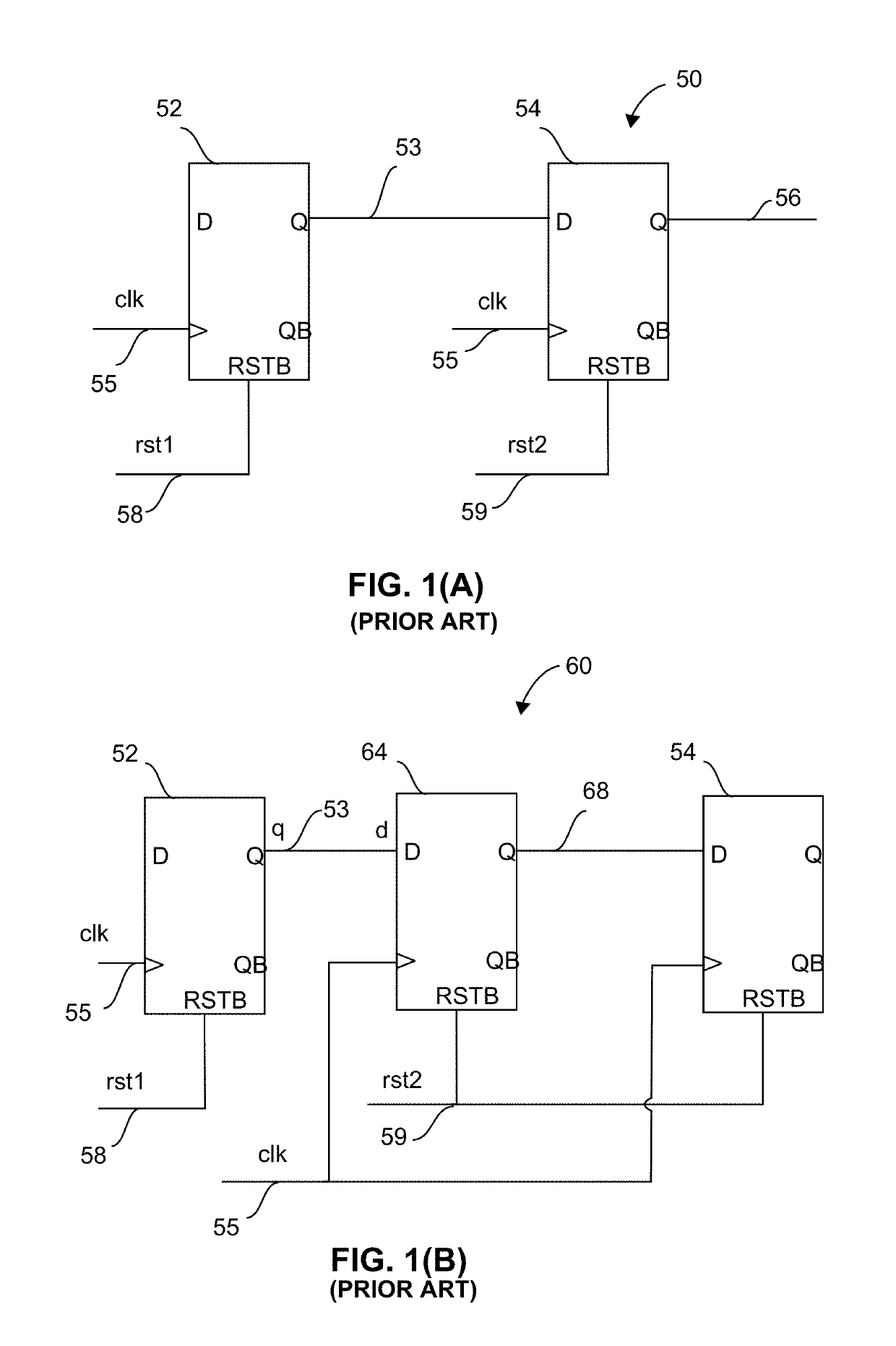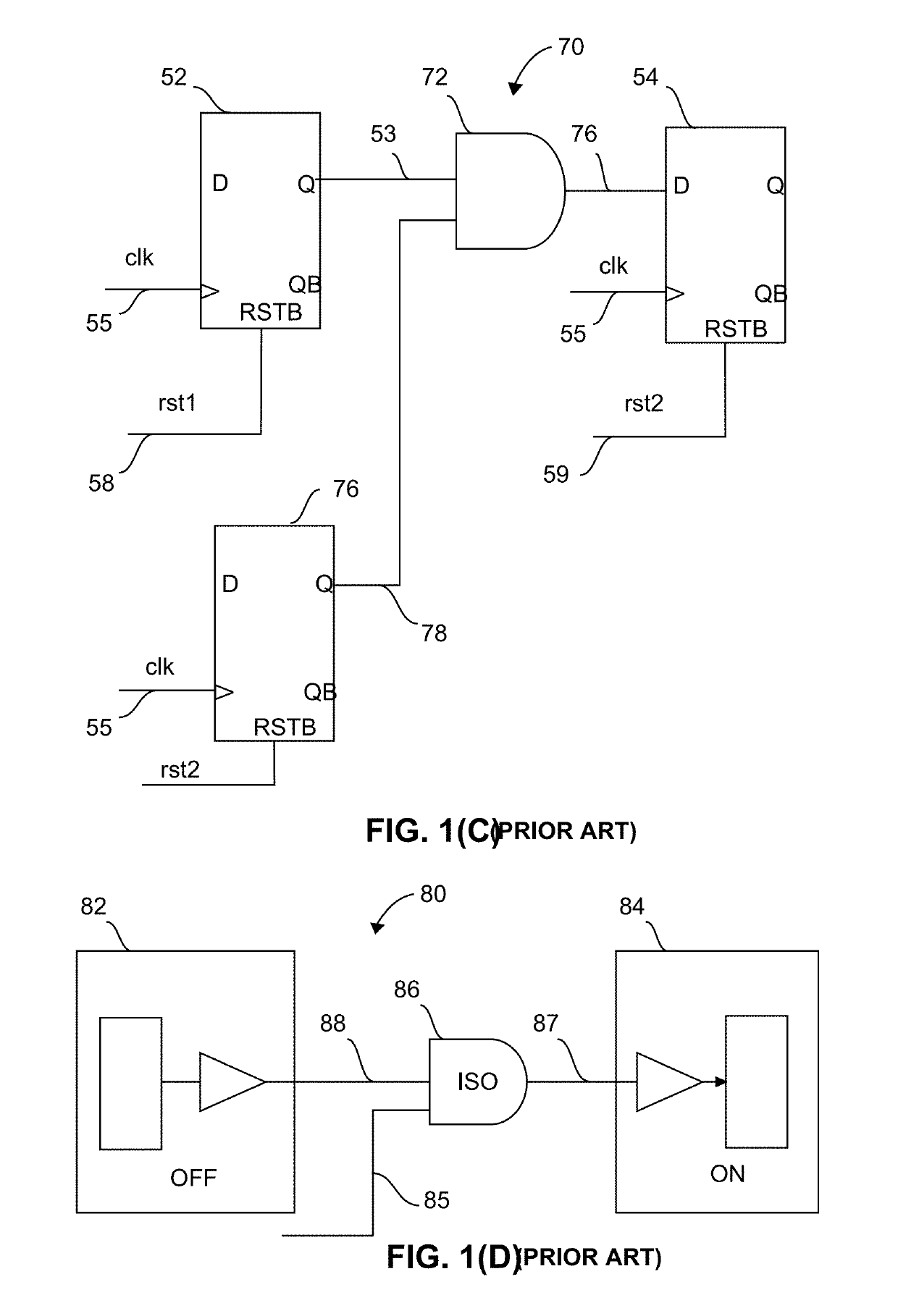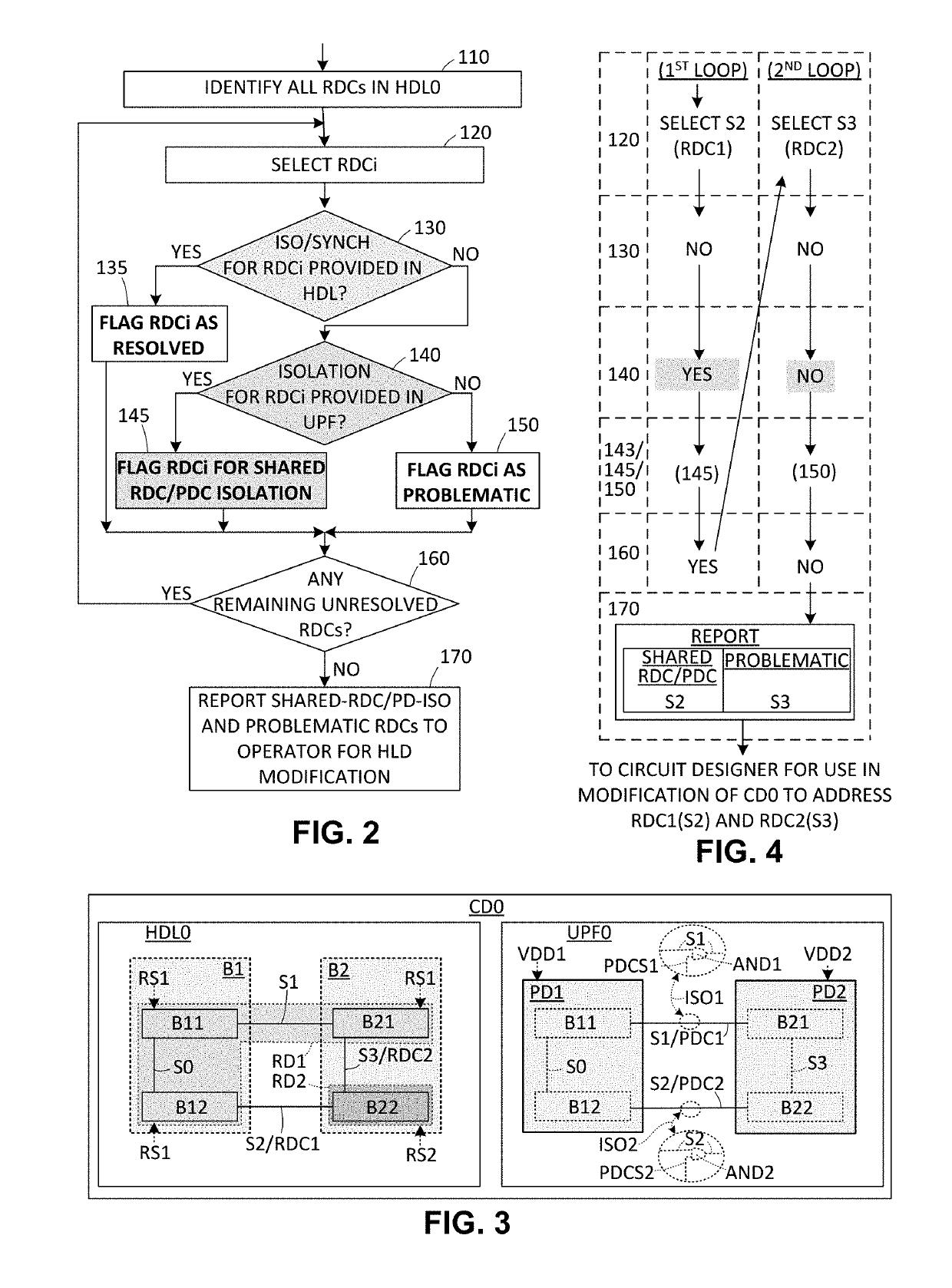Reset domain crossing management using unified power format
a domain crossing and management technology, applied in the field of reset domain crossing management using unified power format, can solve the problems of reducing the design and debug cycle, adding significant time and expense, and erroneous data transfers, so as to reduce the design burden on circuit designers, eliminate redundant isolation gates, and simplify the management of reset domain crossings
- Summary
- Abstract
- Description
- Claims
- Application Information
AI Technical Summary
Benefits of technology
Problems solved by technology
Method used
Image
Examples
Embodiment Construction
[0033]“RDC” in this context refers to Reset Domain Crossing, an asynchronous reset crossing within a same clock domain or different clock domain.
[0034]“UPF” in this context refers to Unified Power Format. UPF is described in IEEE Standard 1801-2009, based on Accellera's Unified Power Format (UPF), and allows designers to describe low power designs and improve the way complex integrated circuits are designed, verified and implemented. UPF covers the Register Transfer Level (RTL) up through more detailed levels of implementation and verification.
[0035]FIG. 2 illustrates an efficient methodology for addressing RDCs and PDCs in an initial circuit design according to an exemplary embodiment of the present invention. In general, blocks 110 to 160 of FIG. 2 depict a loop during which both an initial HDL description and an initial UPF description of a circuit design are utilized to automatically identify each signal of the initial circuit design that forms both an RDC in the HDL description...
PUM
 Login to View More
Login to View More Abstract
Description
Claims
Application Information
 Login to View More
Login to View More - R&D
- Intellectual Property
- Life Sciences
- Materials
- Tech Scout
- Unparalleled Data Quality
- Higher Quality Content
- 60% Fewer Hallucinations
Browse by: Latest US Patents, China's latest patents, Technical Efficacy Thesaurus, Application Domain, Technology Topic, Popular Technical Reports.
© 2025 PatSnap. All rights reserved.Legal|Privacy policy|Modern Slavery Act Transparency Statement|Sitemap|About US| Contact US: help@patsnap.com



